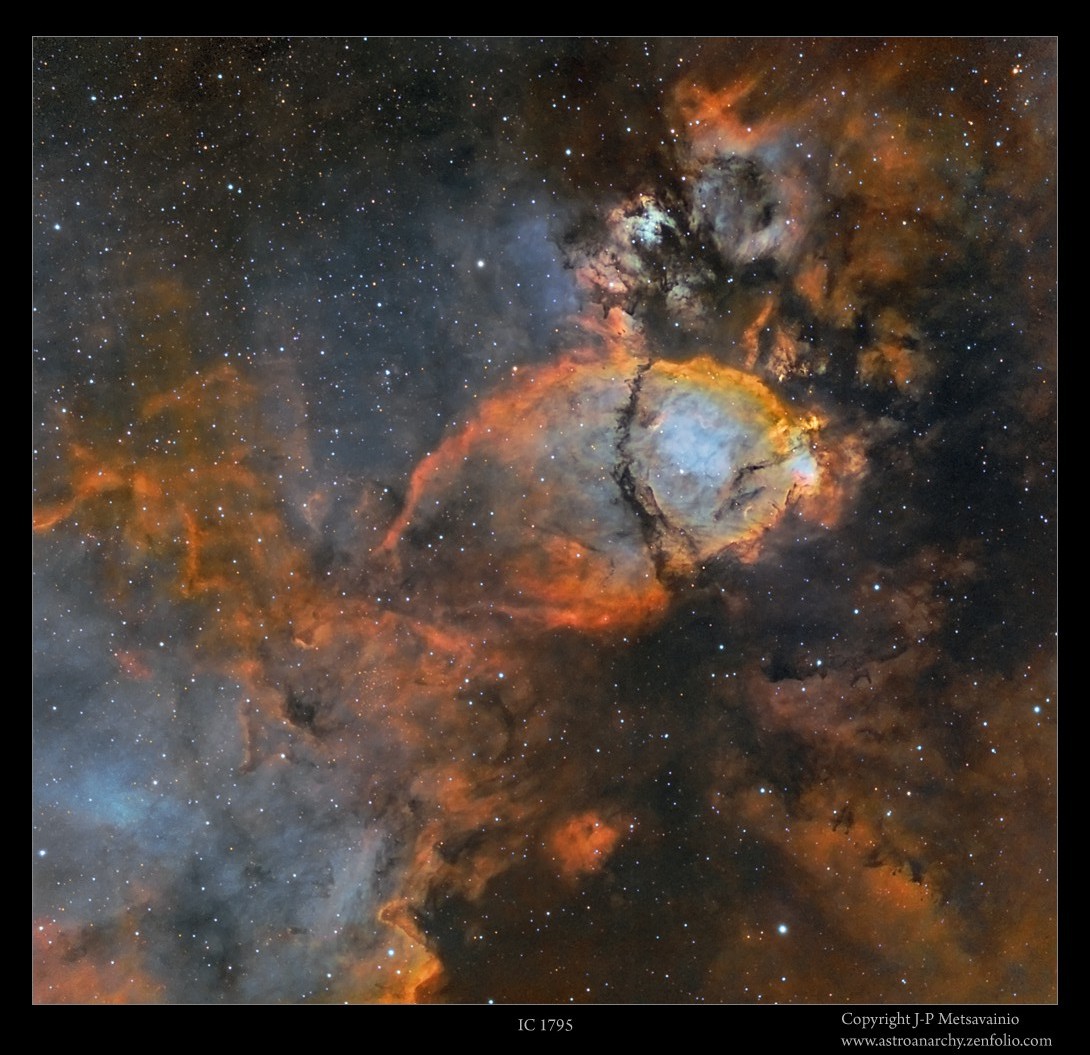COPYRIGHT, PLEASE NOTE
All the material on this website is copyrighted to J-P Metsavainio, if not otherwise stated. Any content on this website may not be reproduced without the author’s permission.
BUY A MUSEUM QUALITY POSTER
BUY A POSTER:https://astroanarchy.zenfolio.com/
Thursday, July 9, 2015
An experimental 3D-study of the IC 1795
This is an experimental test with a 3D-conversion of my astronomical image. Only real elements from the original image are used, there is nothing added but the estimated volumetric information!
NOTE. This is a personal vision about shapes and volumes, based on some scientific data, deduction and an artistic impression.
My original photo of the IC 1795 in the Heart Nebula

A blog post about this photo, with technical details, can be seen HERE
3D-study as a Video
This is a looped video, click to start and stop. Original movie is in HD720p resolution.
A simple animated GIF
Info about the technique used
Due to huge distances, real parallax can't be imaged in most of the astronomical objects.
I have developed an experimental technique to convert my astropics to a artificial volumetric models.
My 3-D experiments are a mixture of science and an artistic impression. I collect distance and other information before I do my 3-D conversion. Usually there are known stars, coursing the ionization, so I can place them at right relative distance. If I know a distance to the nebula, I can fine tune distances of the stars so, that right amount of stars are front and behind of the object.
I use a “rule of thumb” method for stars: brighter is closer, but if a real distance is known, I'm using that. Many 3-D shapes can be figured out just by looking carefully the structures in nebula, such as dark nebulae must be at front of the emission nebulae in order to show up etc...
The general structure of many star forming regions is very same, there is a group of young stars, as an open cluster inside of the nebula. The stellar wind from the stars is then blowing the gas away around the cluster and forming a kind of cavitation – or a hole — around it. The pillar-like formations in the nebula must point to a source of stellar wind, for the same reason.
How accurate the final model is, depends how much I have known and guessed right. The motivation to make those 3-D-studies is just to show, that objects in the images are not like paintings on the canvas but really three dimensional objects floating in the three dimensional space. This generally adds a new dimension to my hobby as an astronomical imager.
Labels:
animations,
research and development
Subscribe to:
Post Comments (Atom)











3 comments:
Dear J.P.,
Is it possoble to simulate rotation of the view while beeing inside the nebula (even full rotation)?
Could you provide the length scale bar in the corner of the videoframe, for instance in light years (or some more suitable units)?
I have been fascinated by your work for some time already, but your recent 3-D reconstructions/simulations are mindblowing. Not only because of esthetics but also from scientific point of view.
I am wondering whether you are the inventor of this technique. Have you seen this kind of processing before?
Thank you for sharing your amazing work, it must have cost lots of effort and education.
Best regards,
Tomas Gancarcik
gancarcik.tomas@gmail.com
Hi Thomas,
Yes, it's possible and I have done few. Here is a collection of my youtube movies out of the 3D-experiments: https://www.youtube.com/channel/UCivFr6kAAYZqMVE2doG9uDQ/videos
I can do almost any kind of animation, if needed. So far i have done those just for a fun. A scale bar in light years is a good idea, thank you. I will add it in future.
The method used is mine but it's basically just modeling and animation with some special tricks to it be usable for the astronomical objects. I haven't seen many animated nor 3D nebulae around. NASA has published some how simple 3D animations out of Hubble pictures though.
I have semi automated the processing workflow, so it doesn't take too much time to convert a photo to the 3D model. Maybe 30min or so.
Several sw are used. PS for separating different elements from the original photo. CNC-control sw for creating 3D mesh out of a starless gray scale nebula photo. An older surface modeling sw, "True space", for mesh manipulation and texture mapping and animation. Several other softwares for details and animation layering, if needed.
Dear goodness, that's STUNNING. Very impressed to say the least.
Post a Comment